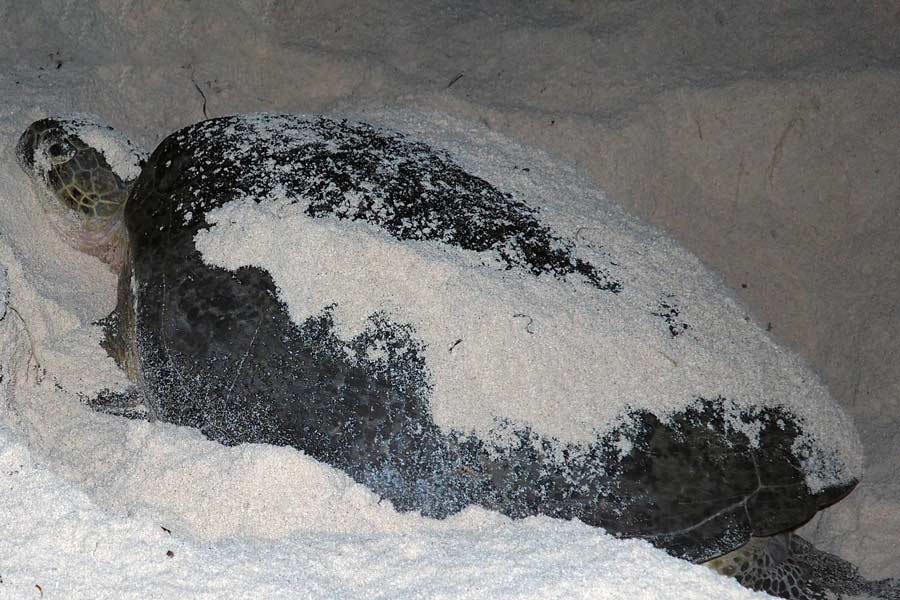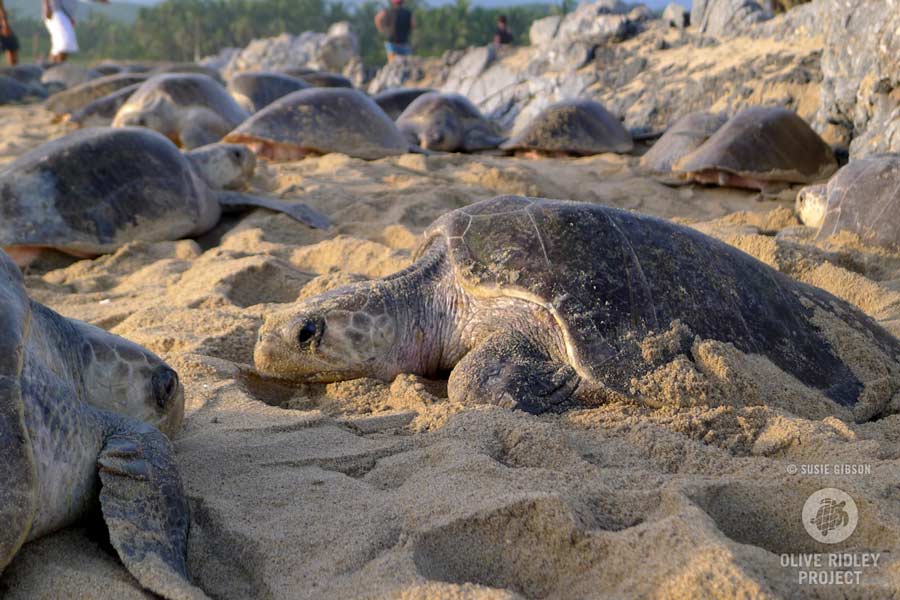Sea turtles eggs must incubate in moist sand. For this reason, every year, some beaches around the tropical and temperate world are visited, mostly at night, by adult females who come ashore to dig a nest chamber and there, deposit their eggs.
It is a common belief that only females come ashore. However, in some places in the world where waters are a little bit colder, turtles of both sexes may be found basking in the sun on the beach! This basking behaviour in sea turtles is linked to thermoregulation (regulation of the body temperature), and is commonly seen for green turtles of the Galapagos, Hawaiian and Wellesley archipelagos. As sea turtles are poikilothermic, meaning that they can not internally maintain their body temperature and must absorb heat from the surrounding environment to maintain optimal body temperature, this behaviour helps the turtles in warming their internal temperatures by up to 3ºC! There are also some speculations that basking may aid immune function, predator avoidance, digestion, egg development and even prevent unwanted courtship.


References:
- Mrosovsky, N. (1980). Thermal biology of sea turtles. American Zoologist, 20(3), 531-547.
- Spotila, J. R., & Standora, E. A. (1985). Environmental constraints on the thermal energetics of sea turtles. Copeia, 694-702.
- Van Houtan, K. S., Halley, J. M., & Marks, W. (2015). Terrestrial basking sea turtles are responding to spatio-temporal sea surface temperature patterns. Biology letters, 11(1), 20140744.

